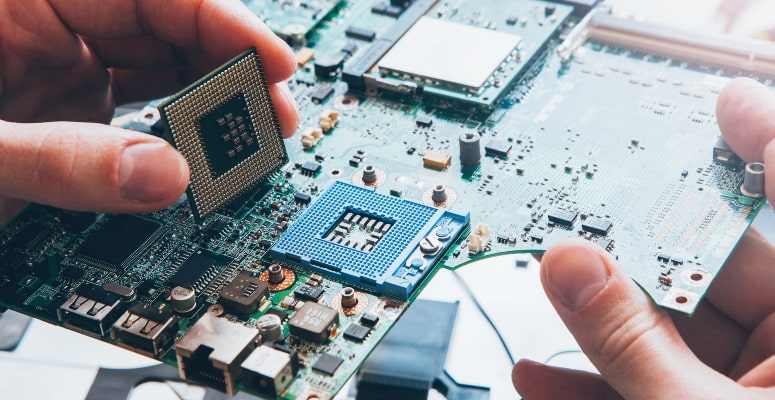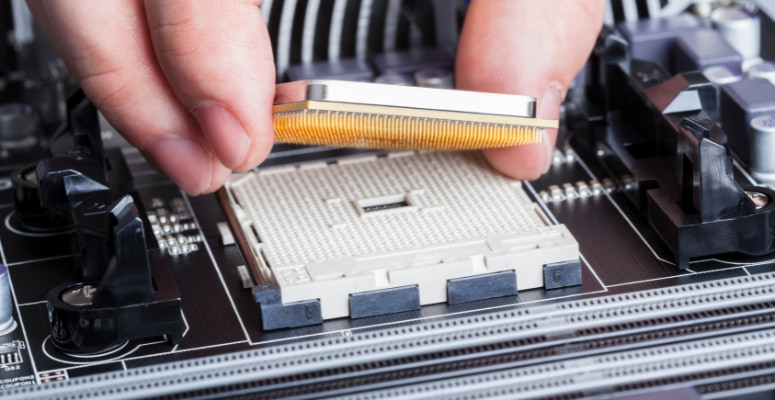All of us want our computers to perform at the best speed possible. You do not want to wait while the PC struggles to load a media file or render an image, correct? Ideally, this should not be a problem. At least, we have processors that improve performance through each iteration. Here is the question, though. How do you make sure that the CPU gives priority to the tasks you have in the foreground?

I mean, there are many instances when the opposite things happen. You are running multiple apps on your PC, and some of them are foreground while others are background. Wouldn’t it be problematic if your CPU prioritizes the background-running apps over foreground-running apps? As a result, you will have to use the main app — Photoshop or Adobe Premiere Pro — with pathetic speeds.
These instances will easily translate to a lack of productivity as well. Therefore, you do not want this to be the case. Do not worry; it is comparatively easy to set CPU priority to prefer foreground applications. There are a couple of ways to go around this problem as well. In this guide, we have compiled the best options you can count on to make this possible.
How Does Changing the CPU Priority Help?
We should understand why you should consider changing the CPU priority in the first place. As you probably know, the Windows OS uses a ton of processes to keep functioning. Each of these processes needs a unique amount of CPU resources as well. To serve these varying needs, Microsoft has designed many priority levels in the OS. Some of these are real-time levels (16), variable levels (15), and a system level.

Processes would choose one of these levels according to the requirement. Usually, everything takes place equally. If there are two processes with the same priority level, they will get the same power delivered by the CPU. In the day-to-day scenario, however, you cannot rely on this equal distribution system. Instead, you should decide which one of the two given processes should get more CPU time.
Let’s say you are playing a high-intensity game on your Windows PC. However, because you are using an app like Photoshop or Chrome, there are many background processes. At this point, you should take the extra step of telling your system to prioritize the game and not the background processes. Only this way will you be able to get the maximum performance for the gameplay.
Also Read: 3 Reasons Why A CPU Cooler Is Important For A PC
Method #1 Change System Settings to Prioritize Foreground Applications
The best way to change CPU priority is to ask your Windows PC to do it. You can use a handy tutorial to do so, and it is powered by the default Settings option on Windows.
- You have to open the Control Panel on your PC by pressing Win + R and typing ‘control panel’ in the Run dialogue box. Alternatively, you can search for the control panel from the Start menu and open the entry.
- Once you are in the Control Panel, you have to check out the subsection called System & Security.
- From the many options you can see on the screen, you have to click on ‘System.’
- Choose Advanced System Settings and navigate until you see the System Properties window
- You can choose the Advanced tab in the System Properties Window and click on the ‘Settings’ button under the Performance subsection.
- In the upcoming window, you can choose the option to ‘Adjust for best performance.’
- You can press Apply and the system will save all the preferences.
As you can imagine, this setting will force your Windows PC to give extra priority to the applications you are running instead of the background processes. You should keep in mind that Windows employs several background processes to improve the User Interface and experience. So, by keeping them aside, you can get a better-performing application on Windows.
Method #2 DWORD Changing via Windows Registry
Windows Registry is another excellent way to set CPU priority in the way you want. The steps you have to follow are simple as well.
- You have to open the Run dialog box and type ‘regedit.’ Once you are done, you can press Enter.
- Once you are in the Windows Registry Editor, you have to navigate to the following address:
“HKEY_LOCAL_MACHINE\SYSTEM\CurrentControlSet\Control\PriorityControl”
- Once you have reached the end, you will be able to see an entry named Win32PrioritySeperation. You can double-click on the entry and change the value from 2 to 26. It should be noted that 26 is the top value here.
- Once you have done this, you can press OK and close the Windows Registry Editor.
- You may have to reboot your computer to see the changes in effect.
As you may have noticed, you can choose any figure between 2 and 26 as the value of the CPU priority. In a particular case where you need equal priority for background and foreground tasks, you should choose a stable number like 18.
Method #3 Using Task Manager
This is perhaps the most straightforward option out there. You can follow the steps shown below to set CPU priority to prefer foreground application. In this method, you can enjoy better control as well.
- You have to open Task Manager and open the details of the processes.
- Now, find the application that you want to set high priority to.
- Right-click on the corresponding process > Set priority > choose Realtime.
The Realtime entry means your system can change the priority and provide the best resources for the specific task.
The Bottom Line
As you can see, you can choose between these three options based on your needs. You do not have to worry about the first and second options because they rely on system intelligence. If you use the third option, you may also have to disable the preferences once you have stopped using the app. Otherwise, foreground apps that you may run on the system later may have a tough time using CPU resources. We hope this guide helps you.

